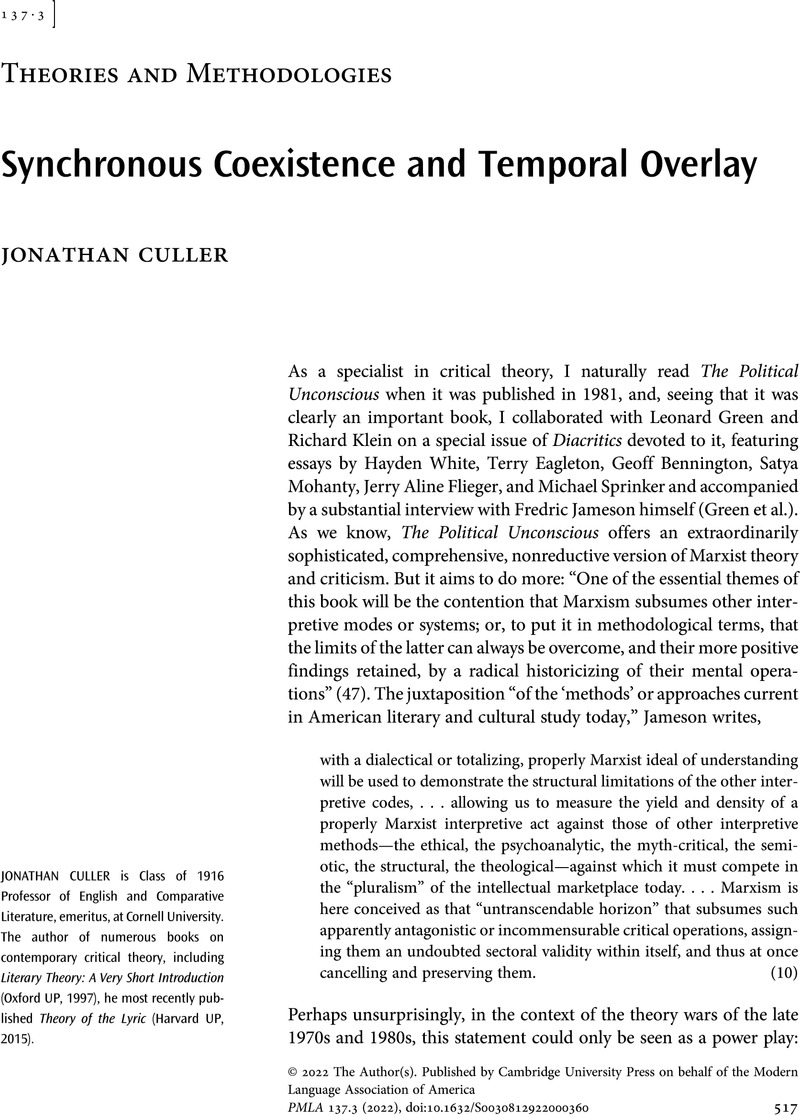No CrossRef data available.
Article contents
Synchronous Coexistence and Temporal Overlay
Published online by Cambridge University Press: 28 July 2022
Abstract
An abstract is not available for this content so a preview has been provided. Please use the Get access link above for information on how to access this content.

- Type
- Theories and Methodologies
- Information
- Copyright
- Copyright © 2022 The Author(s). Published by Cambridge University Press on behalf of the Modern Language Association of America
References
Works Cited
Bennington, Geoff. “Not Yet.” Diacritics, vol. 12, no. 3, fall 1982, pp. 23–32.CrossRefGoogle Scholar
Dowling, William. Jameson, Althusser, Marx: An Introduction to “The Political Unconscious.” Cornell UP, 1984.Google Scholar
Green, Leonard, et al. , editors. Special issue on Fredric Jameson, The Political Unconscious, Diacritics, vol. 12, no. 3, fall 1982.Google Scholar
Jameson, Fredric. “Baudelaire as Modernist and Postmodernist.” Lyric Poetry: Beyond New Criticism, edited by Hošek, Chaviva and Parker, Patricia, Cornell UP, 1985, pp. 247–63.Google Scholar
Jameson, Fredric. The Political Unconscious: Narrative as a Socially Symbolic Act. Cornell UP, 1981.Google Scholar
Jameson, Fredric. The Prison-House of Language: A Critical Account of Structuralism and Russian Formalism. Princeton UP, 1972.CrossRefGoogle Scholar
Robbins, Bruce. “Single? Great? Collective?” South Atlantic Quarterly, vol. 119, no. 4, Oct. 2020, pp. 789–98, https://doi.org/10.1215/00382876-8663699.CrossRefGoogle Scholar
Sprinker, Michael. “The Part and the Whole.” Diacritics, vol. 12, no. 3, fall 1982, pp. 57–71.CrossRefGoogle Scholar


